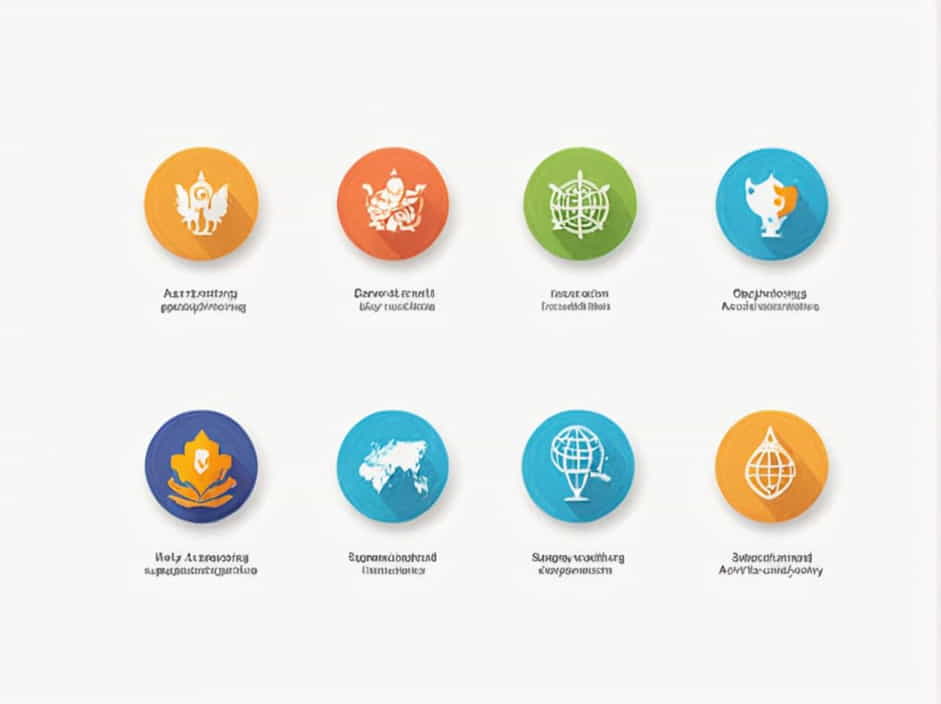In the study of AP Human Geography, supranational organizations play a key role in understanding global politics, economics, and cooperation. These organizations are formed when three or more countries agree to work together for a common goal, often sacrificing some degree of sovereignty for mutual benefits.
Supranational organizations influence international trade, environmental policies, military alliances, and economic stability. Understanding them is essential for students of political geography and global relations.
Definition of Supranational Organizations
A supranational organization is an entity created by multiple nations that agrees to follow shared rules and policies. Unlike a simple alliance, these organizations often have formal agreements, governing bodies, and regulations that member states must abide by.
Key Features of Supranational Organizations
-
Involves multiple nations (three or more).
-
Has a structured governance system with rules and policies.
-
Requires member states to give up some control over their own policies.
-
Focuses on common goals, such as trade, security, or diplomacy.
Examples of Supranational Organizations
There are many supranational organizations worldwide, each serving different purposes. Below are some of the most significant ones studied in AP Human Geography.
1. The United Nations (UN)
Purpose
The United Nations (UN) is a global organization aimed at maintaining peace, promoting human rights, and fostering international cooperation.
Key Features
-
Founded in 1945 after World War II.
-
Has 193 member states.
-
Maintains international peacekeeping missions.
-
Works on global issues like poverty, climate change, and human rights.
Example of Influence
The UN has played a major role in conflict resolution, such as peacekeeping missions in Africa and the Middle East. It also works through organizations like UNICEF, WHO, and UNESCO.
2. The European Union (EU)
Purpose
The European Union (EU) is a political and economic organization that promotes free trade, mobility, and regional cooperation among European nations.
Key Features
-
Established in 1993 with the Maastricht Treaty.
-
Consists of 27 European nations.
-
Uses a common currency (Euro) in most member states.
-
Allows for free movement of people and goods.
Example of Influence
The EU eliminated trade barriers among its members and made travel between European countries much easier. It also negotiates as a single economic entity in global trade agreements.
3. The North Atlantic Treaty Organization (NATO)
Purpose
NATO is a military alliance formed for collective defense. If one member is attacked, all other members are committed to defending it.
Key Features
-
Established in 1949 during the Cold War.
-
Originally designed to counter Soviet influence.
-
Now includes 31 member countries.
-
Focuses on military security and defense cooperation.
Example of Influence
NATO has been involved in conflicts such as the war in Afghanistan and has increased military presence in Eastern Europe due to tensions with Russia.
4. The World Trade Organization (WTO)
Purpose
The WTO regulates international trade and helps settle disputes between countries to ensure fair trade policies.
Key Features
-
Established in 1995.
-
Has 164 member countries.
-
Enforces trade agreements and reduces tariffs.
-
Helps settle trade disputes between nations.
Example of Influence
The WTO has helped reduce trade barriers between nations, making it easier for countries to export and import goods without excessive tariffs.
5. The African Union (AU)
Purpose
The African Union (AU) promotes unity, economic development, and peace across African nations.
Key Features
-
Established in 2001, replacing the Organization of African Unity.
-
Has 55 African member states.
-
Works on economic integration, human rights, and conflict resolution.
Example of Influence
The AU has led peacekeeping efforts in conflict zones like Sudan and Somalia. It also promotes regional economic development through programs like the African Continental Free Trade Agreement (AfCFTA).
Supranationalism vs. National Sovereignty
One of the biggest challenges of supranational organizations is balancing cooperation with national sovereignty. While member countries benefit from trade, security, and political alliances, they also give up some control over their policies.
Advantages of Supranational Organizations
✔ Economic Growth – Countries benefit from free trade and shared markets.
✔ Security and Stability – Military alliances provide protection against threats.
✔ Stronger Global Influence – Nations can act together on issues like climate change and diplomacy.
✔ Conflict Resolution – Organizations help mediate international disputes.
Disadvantages of Supranational Organizations
✖ Loss of National Control – Countries must follow rules set by the organization.
✖ Unequal Benefits – Some countries gain more than others in economic unions.
✖ Bureaucracy – Decision-making can be slow and complex due to multiple countries’ interests.
The Role of Supranational Organizations in AP Human Geography
In AP Human Geography, supranational organizations fall under political geography, which studies how countries interact, form alliances, and manage territories.
Students need to understand:
-
Why countries join supranational organizations (economic benefits, security, diplomacy).
-
How these organizations impact global politics (trade agreements, military actions, international cooperation).
-
The effects of globalization (how organizations shape economic and cultural exchanges).
Future of Supranational Organizations
As globalization continues, supranational organizations will play an even greater role in world affairs. However, challenges such as nationalism, economic inequality, and geopolitical tensions may impact their effectiveness.
Trends to Watch
Expanding Regional Unions – More countries may join economic or political alliances.
Shifting Global Power – Organizations like BRICS (Brazil, Russia, India, China, South Africa) may challenge Western-led groups.
Environmental Cooperation – Climate change may force nations to work together on global solutions.
Supranational organizations are powerful forces in global politics, shaping trade, security, and diplomacy. Understanding their role is crucial in AP Human Geography, as they influence everything from economic policies to military strategies.
While these organizations bring economic and security benefits, they also challenge national sovereignty. As the world becomes more interconnected, the role of supranational organizations will continue to evolve, making them a critical topic in international relations and geography.
